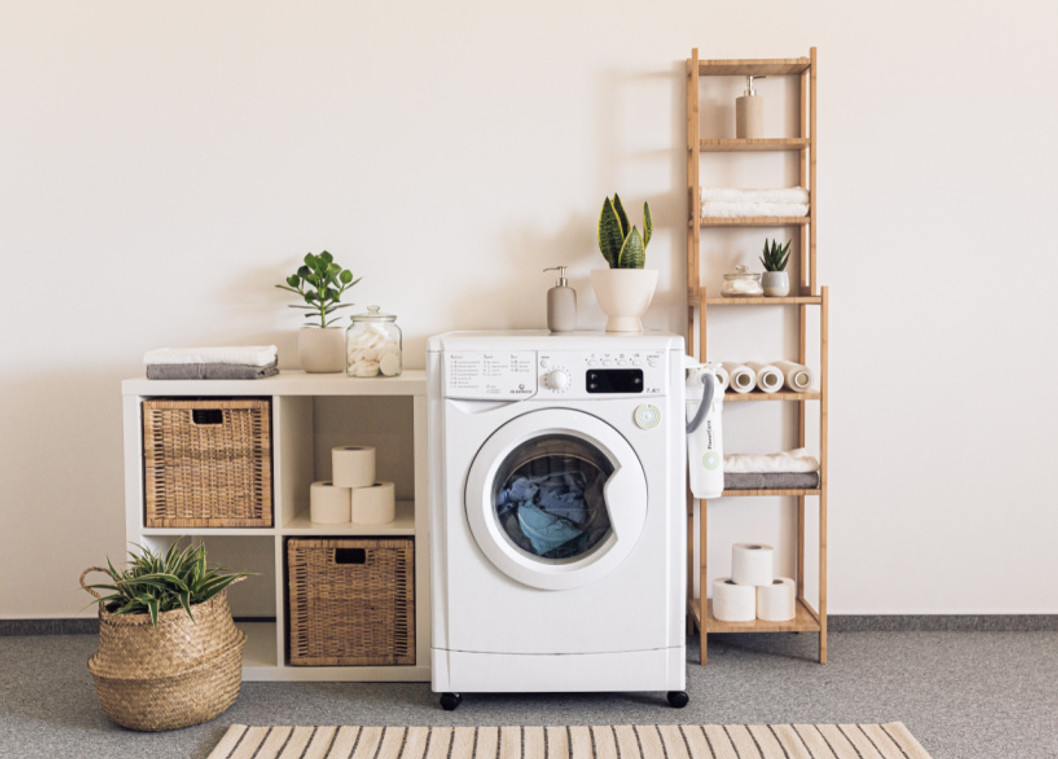Brand new curtains can transform a room but over time they can start to look dull and dirty, especially if they’re not cared for properly, so…
How Often Should You Wash Curtains?

The frequency with which you’ll need to wash your curtains will depend on factors including colour, material, and lifestyle.
Colour
While white curtains will attract stains just as easily as black curtains, needless to say stains on the former will be much more visible than on the latter. If you’d rather limit how often you have to wash them, it might be an idea to invest in darker-coloured curtains.
Material
Some materials are more absorbent than others. A set of heavy curtains will soak up more airborne moisture and other particulates, and so will absorb more dirt than thin curtains. Some curtains come with moisture-repelling, glossy coatings that can be wiped clean.
Location
Some parts of the home will produce more airborne grime, dust and particulates than others. A busy kitchen, for example, is going to generate them constantly. Of course, while a decent extractor fan will address the problem, you’ll still get a little bit of airborne dirt settling on your worktops, walls, cupboards and – yes – curtains.
On the other hand, a set of curtains in a guest bedroom might go virtually untouched for years on end, in which case they’ll need much less attention.
Lifestyle
Needles to say, certain lifestyles are naturally going to create more dirt than others. If you’re a smoker, you can expect your curtains to discolour faster than they would in a non-smoking home. The same can be said if you have children or pets.
Cleaning Curtains in the Washing Machine
Now, before we go any further, a word of caution.
Washing curtains the wrong way can ruin them forever. Curtains aren’t crafted in the same way as clothing, and may react badly to the excessive heat inside your washing machine. Shrinking and warping are common side-effects that are impossible to reverse. As such, you’ll only want to wash them at all if you absolutely have to, so be sure to check the label for instructions.
If you discover that you can indeed wash your curtains in the washing machine, then be sure to use a gentle cycle, and hang them to dry naturally. It’s almost never worth the risk of sticking them in the tumble-dryer.
Iron them before they get a chance to dry out entirely, and hang them up straight away. This will minimise the chance of wrinkles.
If you’ve only got a small washing machine, you might find it difficult to wash a whole set of curtains at once. Washing machines need a little bit of extra room in order for the contents to properly turn, so don’t overfill it. If necessary, wash each curtain panel separately.
Dry Cleaning Curtains
If the label on your curtains states they should be dry-cleaned only, your only course of action is to take the item down to your local dry-cleaner. Bear in mind, however, that even dry-cleaning can cause minor shrinkage, which most dry cleaners will regard as unavoidable.
Dry cleaning might also affect trims or other embroidery, so be sure to check thoroughly before committing. If you’ve managed to spill red wine or some other tannin-rich substance onto the curtains, then dry-cleaning might be your best and only option (though it’s worth trying to clean them with a specially-formulated cleaning solution, first).
If your curtains are simple in design, as well as big and heavy, then you might not notice shrinkage after a single wash, but the cumulative effect of multiple washes will eventually show, and you’ll need to replace the curtains.
For this reason, we’d suggest vacuuming, washing and wiping your curtains wherever possible, in order to maximise their lifespan.
Vacuuming Curtains
Vacuum cleaners offer an easy way to remove stray hairs and dust from your curtains. They don’t run hot, and they don’t expose your curtains to moisture. This makes vacuuming far preferable to machine-washing.
Bear in mind that you’ll need to use a soft brush attachment. This will prevent the fabric from being drawn over the end of the nozzle, which is bad for the curtain (and the vacuum-cleaner). You don’t need to take the curtains down to vacuum them, which makes it easier to clean them more frequently. You’ll most often find dust towards the top of the curtain, as this is the least mobile part of the material. Obviously, you’re more likely to find pet hairs around the base of the curtain. Work your way along the curtain, cleaning the inside of each pleat, before moving around to the rear.
Steam-Cleaning Curtains
Finally, it’s worth considering investing in a handheld steam-cleaner. This will send out a blast of hot moisture that’ll penetrate right into the fabric, dislodging even the most stubborn of stains.
Steam cleaners are especially useful if you’re dealing with very thick curtains with grease and stains running all the way through them. Cleaners of this sort are often worth the investment, as they can also be used to spot-clean upholstery and carpets. Just make sure to use the cleaner’s most gentle mode.




